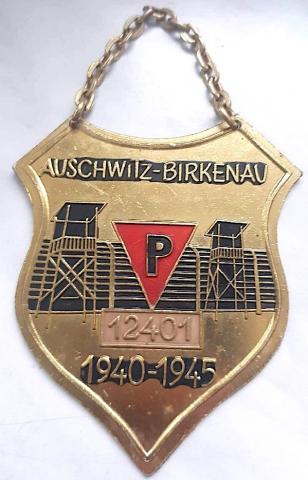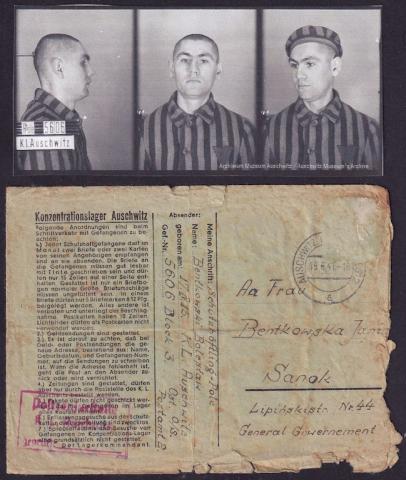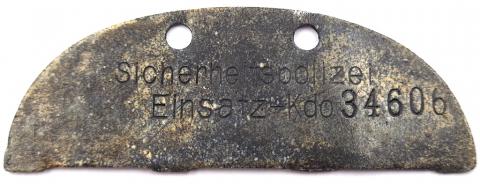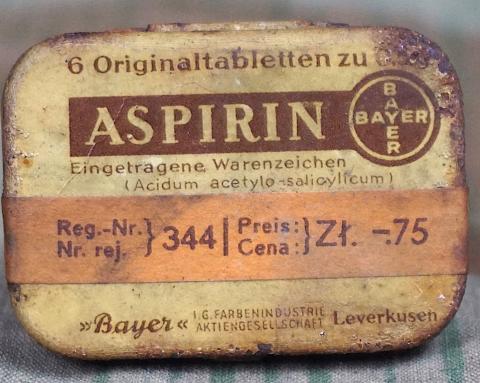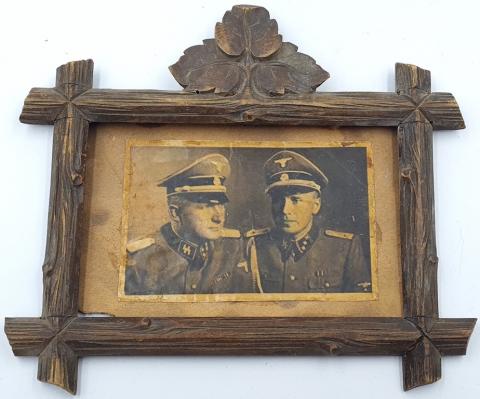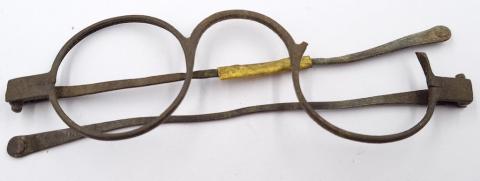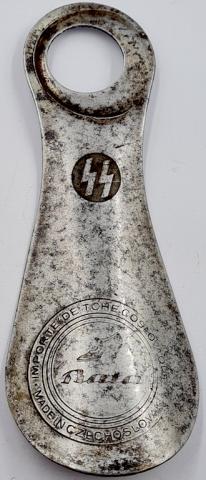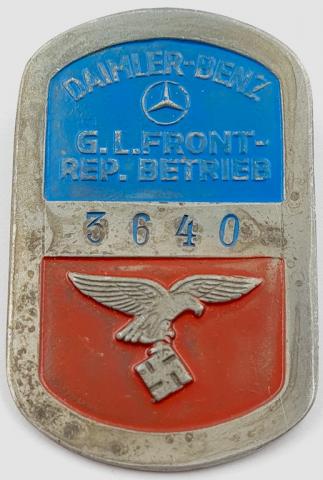WW2 German Nazi Forced Labor Mercedes Benz Luftwaffe worker's ID pin
From 1937, Daimler-Benz AG increasingly produced armament items such as the LG 3000 truck and aircraft engines such as the DB 600 and DB 601. To create additional capacity for aircraft engine production in addition to the Marienfelde plant the Genshagen plant was built in a well-concealed forest location south of Berlin in 1936.
Armament production accounted for an ever-growing proportion of the company’s revenues up to the start of the war. In the summer of 1941, the Daimler-Benz AG Board of Management, chaired by Wilhelm Kissel, no longer envisaged a swift end to the war or an imminent return to producing civilian vehicles.
The most important line of business was truck production, whilst passenger-car manufacture – already limited to military requirements since the beginning of the war – was in decline and virtually came to a standstill by the end of 1942. The company was now focusing on the manufacture and assembly of military components for the army, navy and air force.
Off-road LGF 3000 truck, 1940.Off-road LGF 3000 truck, 1940.
Spare parts production and the repair of military vehicles and engines were also growing in importance. New staff were needed to handle the increased armament production because many workers were fighting on the front line.
Daimler-Benz DB 601 A aero engine, 12-cylinder V-engine with gasoline injection, 1937Daimler-Benz DB 601 A aero engine, 12-cylinder V-engine with gasoline injection, 1937
Initially, the company recruited women in order to cope with the required unit volumes. However, as staff numbers were still too low, Daimler-Benz also used forced labourers. These prisoners of war, abducted civilians and detainees from concentration camps were housed close to the plants. Forced labourers from western Europe lived in guest houses, private accommodation or schools.
Workers from eastern Europe and prisoners of war were interned in barrack camps with poor, prison-like conditions. Concentration camp detainees were monitored by the SS under inhumane conditions. They were “loaned out” to companies in exchange for money. In 1944, almost half of Daimler Benz’s 63,610 Daimler Benz employees were civilian forced labourers, prisoners of war or concentration camp detainees.
After the war, Daimler-Benz admitted its links with the Nazi regime, and also became involved in the German Industry Foundation’s initiative “Remembrance, Responsibility and Future”, whose work included the provision of humanitarian aid for former forced labourers.
